Jonathan Piche-Delorme began his career in visual effects in 2006. He worked in many studios such as Rodeo FX and MELS before joining FOLKS in 2021. He worked on a large number of projects such as The Shallows, Preacher, See and Blonde.
With 20 years of experience, Gabriel Tremblay-Beauvais worked in various studios such as Hybride, Rodeo FX and Framestore before joining FOLKS in 2016. His filmography includes films such as Immortals, Edge of Tomorrow, Alien: Covenant and Spider-Man: No Way Home.
What is your background?
Gabriel Beauvais // From a young age, my passion for characters has been unwavering. I was never interested in playing with toys, cars, and blocks; my fascination lay with cool figurines. Fast forward to about a decade ago to talk about VFX. I started my VFX career as a generalist. Then, with the VFX industry in Montreal becoming bigger, I specialized in modeling. Even as I specialize in this field, I continue to derive immense joy from the holistic asset creation and artistic process. I joined FOLKS more than six years ago, where I started CG supervising and kept developing our skills in creature development.
Jonathan Piche-Delorme // I began my journey into VFX creation when I was a teenager. It started because I wanted to solve some issues I was facing while editing my personal projects. As a person who loves puzzles and challenges, I slowly fell in love with the discipline. I started my professional career as a compositor and quickly became in charge of a team, moving gradually as a VFX supervisor.
How did you and FOLKS arrive on this show?
Gabriel Beauvais // That’s a pretty good question, probably a question for our Business development team. On the creative side, all we can do is have the best collaboration with our clients and help them create their vision to create incredible imagery.
Jonathan Piche-Delorme // I was approached by Christina and Paul Graff. They asked me if I wanted to be part of their next project. Since I really enjoyed my past projects working with them, it was a no-brainer. We then checked with the teams at FOLKS to see if it was a project we could take on, and luckily, it was a good fit for us.
How was the collaboration with Director Rob Savage and VFX Supervisor Paul Graff?
The collaboration with Director Rob Savage and VFX Supervisor Paul Graff was truly incredible. Paul is an exceptional VFX supervisor who made it a priority to ensure our access to Rob. Both were extremely approachable, and we engaged in enjoyable and productive creative discussions to ensure we honored Rob’s artistic vision. Paul’s extensive experience in the field was evident, as he ensured that we had all the necessary elements from the set to carry out our work seamlessly during post-production. He provided valuable feedback that guided us toward achieving the best possible outcome for the project.
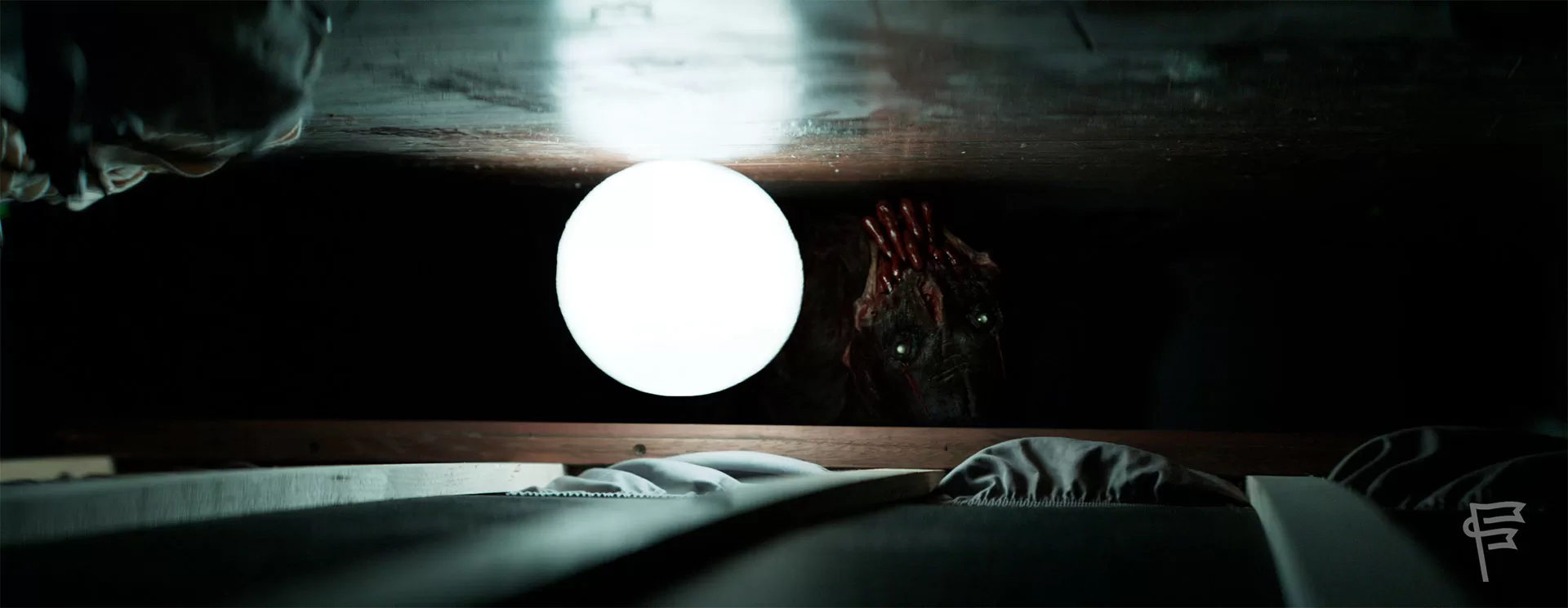
What were their expectations and approach to the visual effects?
The team’s first expectation was to find the creature’s concept, look and feel, and ensure it could be 3D printed and visualized on set. We believe that this step was critical for obtaining great performance from the actors. By having someone play the head of the creature on set, the actors would be able to feel its presence and even experience a surprise effect. Ultimately, their aim was to 3D print the creature and brought it to life on set, as they believed this approach would result in better performance and a cohesive result
How did you organize the work with your VFX Producer?
Like any other project, a bid was made based on production needs before shooting. Being a VFX animation-driven story, we had to make sure that we allowed the team the possibility to work on several versions of the same shot to explore with the director our options and what was the best for each shot. This was the main challenge of this project.
What was the work made by FOLKS?
FOLKS was responsible for multiple aspects of the project. Firstly, we created the Boogeyman creature, a challenging endeavor that required meticulous attention to detail. Additionally, our environment teams developed a procedural system in Houdini to create rotten vines, which were used to enhance the overall set design. We called them the black Roth; they ended up crackling and burning by our FX department. Also, we extensively worked on creating realistic fire effects, utilizing excellent reference footage captured on set. Towards the end, we implemented further enhancements and produced shots with full CG fire. Finally, we collaborated with our FOLKS Bogotá studio, where they worked on replacing hair, fixing wigs, and ensuring continuity.
How did you work with the art department to design The Boogeyman?
We initiate the design phase during the creature-building process by collaborating closely with our Art and Asset departments. A great significance was placed on the sculptural process, as it allows us to prioritize the creature’s silhouette and proportion before delving into intricate details.
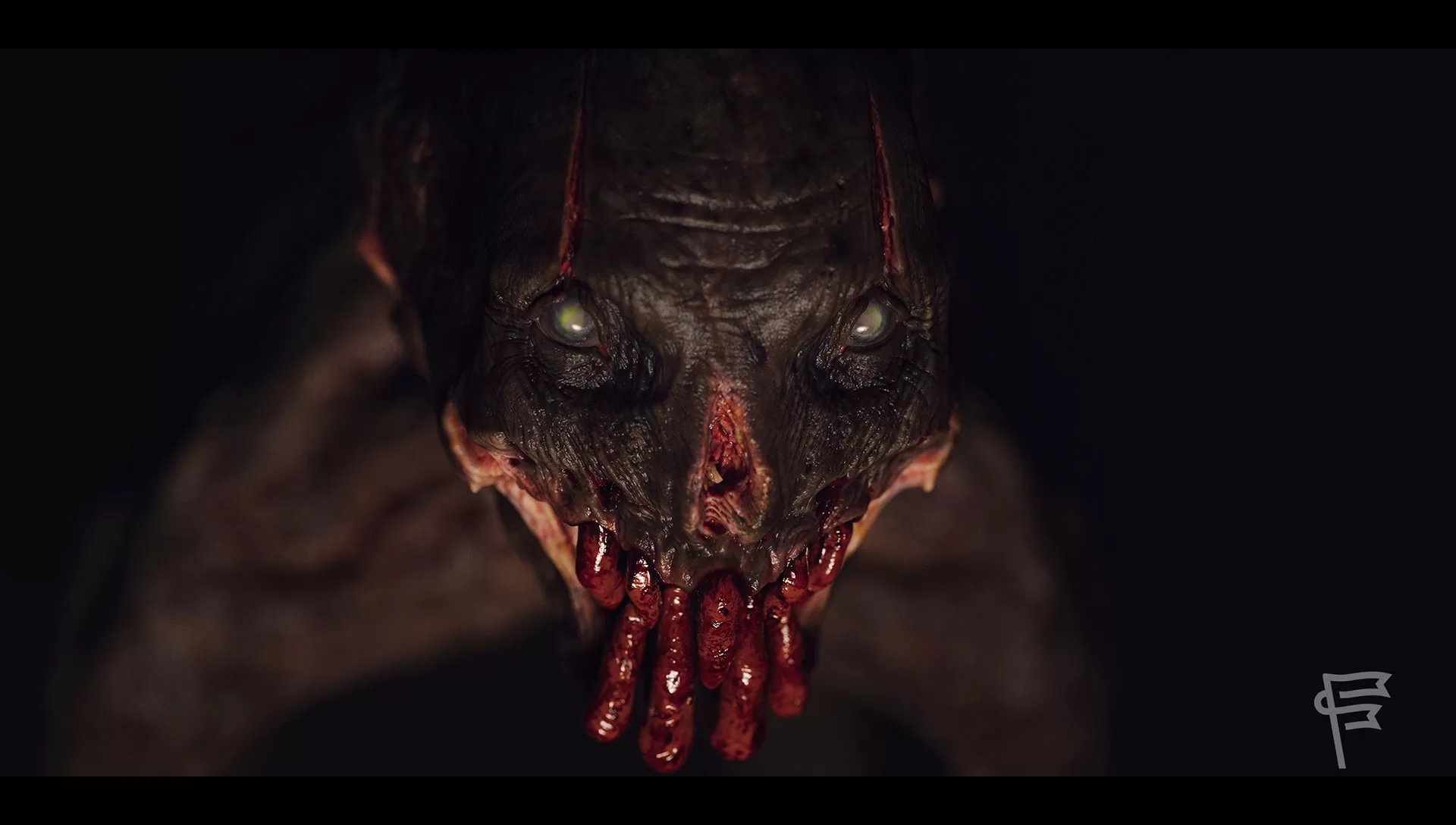
Can you elaborate on its creation?
We were fortunate enough to be involved in the project from an early stage, which gave us the opportunity to handle both the design and the final asset. When we joined, there were already several concepts in place, but the production team wasn’t fully satisfied with the visual direction. Initially, seeing concept art from artists we admire initially felt a bit stressful. However, we channeled that stress into positive energy, viewing it as a challenge to overcome.
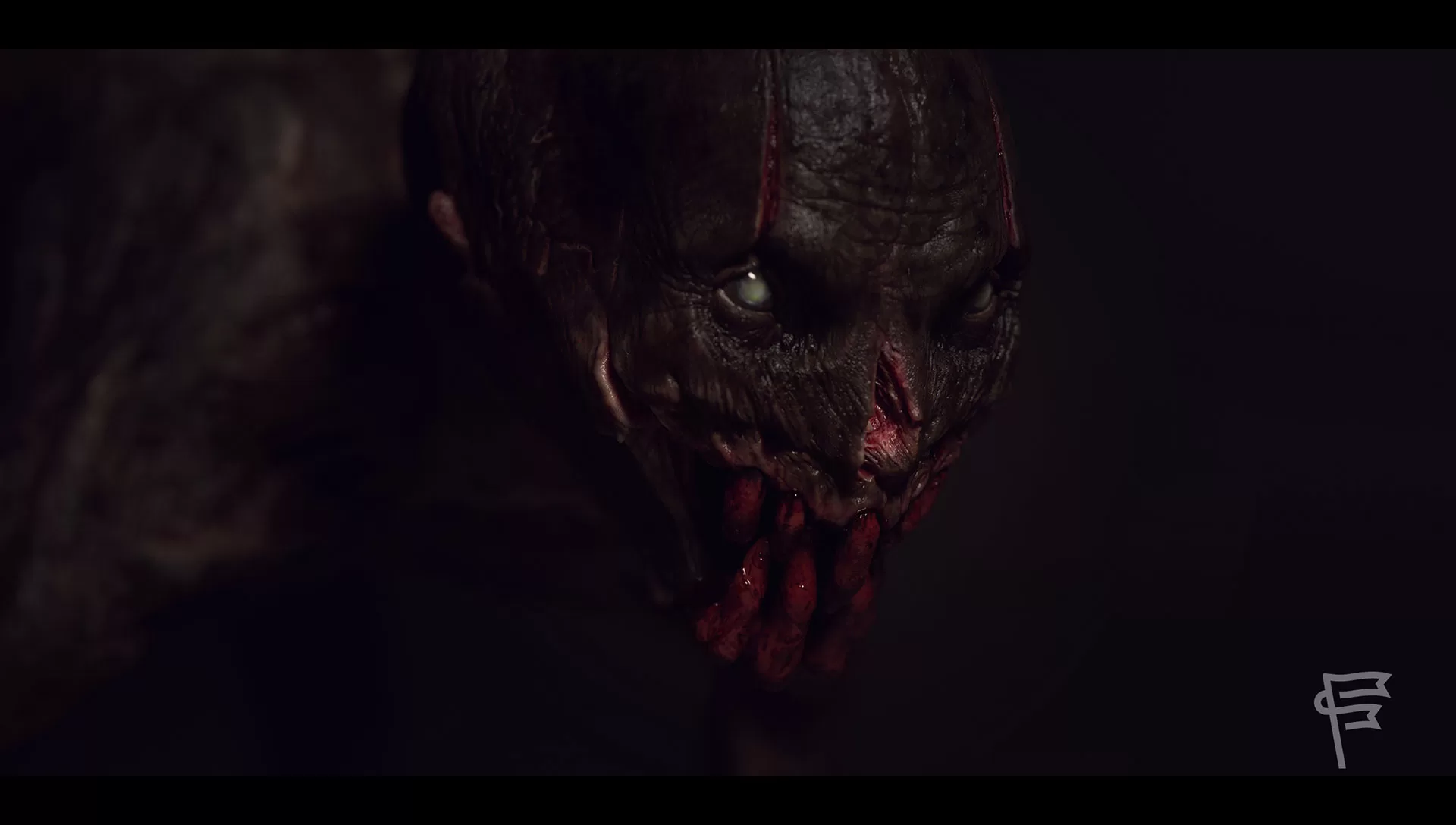
The creature is seen mostly in the dark or really briefly. How does that affect your work?
It was a challenge to work with a creature that is always in the dark because we wanted to show its details. In the design phase, we made sure to make the face, jaw, and eyes stand out so they are noticeable even in darkness. We focused on adding as much detail as possible to the creature’s visuals to ensure it looks good when lighting is applied. During the compositing process, we were careful to highlight the key parts of the creature to make it as visible as possible.
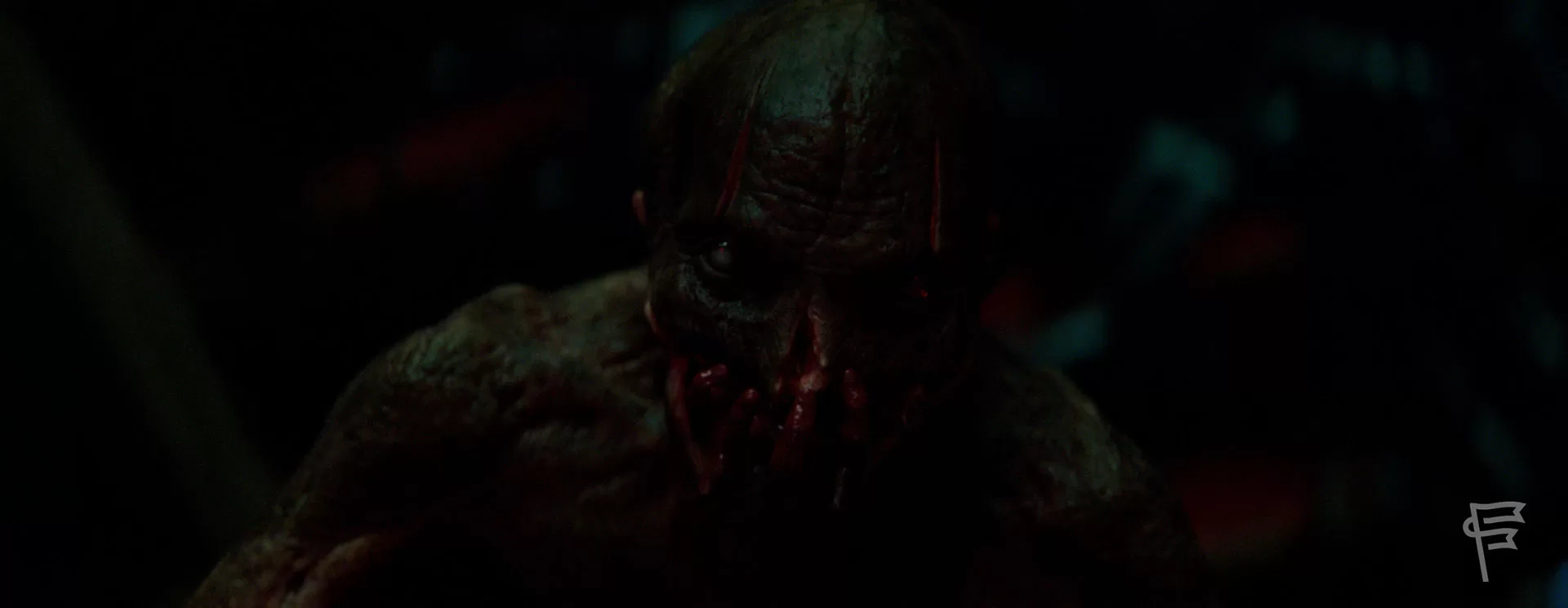
Can you tell us more about his eye work?
When it came to creating the eyes for our creature, we took inspiration from the anatomy and shape of a cat’s eyes. We wanted to capture the essence of realism. We believe that by closely modeling elements after real-life counterparts, we can achieve a higher level of visual authenticity, especially when it comes to the reaction to lighting.
During the design phase, we engaged in extensive trial and error. We experimented with numerous variations of eye colors and light reflections, meticulously refining the details. In fact, we even created eyeless models to explore. However, after careful consideration, we discovered that the most effective approach was to incorporate realistic eyes and reactions, drawing inspiration from how a cat behaves in dimly lit environments. This combination ultimately yielded the desired results.
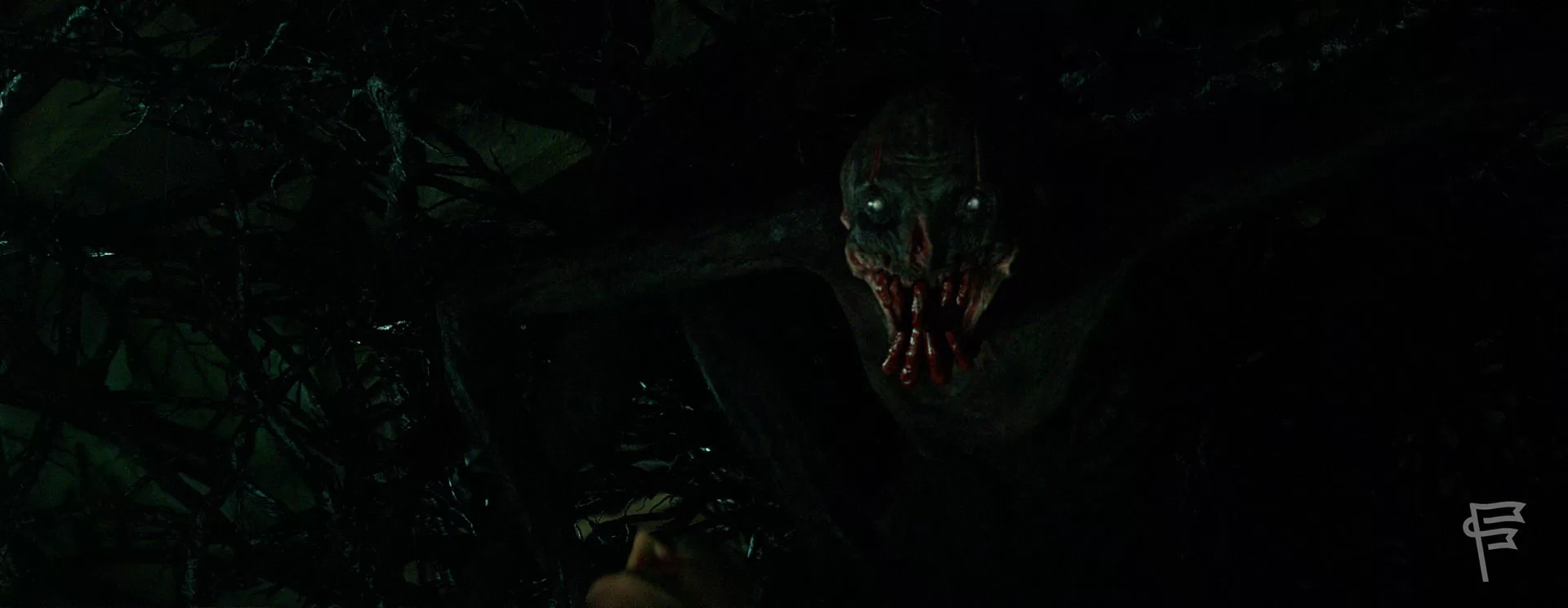
What kind of references and indications did you receive for his animations?
Rob provided us with video files that served as inspiration for many scenes. We had a diverse range of sources that we drew inspiration from. After the shoot, the production team arranged for a post-viz, which provided us with a clear brief. In cases where there was no post-viz, we had videos of Rob followed by a creative exchange.
Some scenes had an orangutan-like quality, others had an arachnid feel, and there were even elements of a predatory wolf or human characteristics. During the development phase, we tried various walk cycles mimicking the different types of animals mentioned. However, the movements of spiders and felines ended up being the primary sources of inspiration for our animators.
How did you manage his interactions with the actors?
Firstly, a 3D head of the creature was printed and attached to a stick to help the actors visualize its position in space. Additionally, a stand-in was present on set for every scene involving interaction with an actor, allowing the actors to have a genuine interaction. In some cases, it was even Rob himself who acted as the stand-in.
There is even a moment at the beginning of the film where The Boogeyman’s arm enters an actress’s mouth. For this scene, the actress inserted her own arm into her mouth to create the illusion of interaction. We then removed her arm and replaced it with the creature’s arm, adjusting her face and jaw to accommodate the arm’s entry. These methods allowed us to effectively manage the interactions between the actors and the creature, enhancing the authenticity and realism of their performances on screen. This scene flashes by in the film, leaving a lasting impact. The pain and fear are palpable, creating a powerful experience. Without giving away too much, be sure to keep an eye out for it when you watch the movie.
Can you tell us more about the soul strings effects?
The effects of the soul strings took several weeks or months to develop. Our initial concept was based on the idea of The Boogeyman feeding on the fear and essence of its victims. We aimed to create a visual representation that captured this concept.
Our team put in significant effort to define the essence of the soul strings. We collaborated extensively with our art department to establish the concept. Additionally, we worked with R&D, a DG double, and the FX department to strike the right balance between the strings’ attraction to the human body and The Boogeyman’s attraction to them.
In the end, we came up with the idea of twisted black spaghetti-like strands, which became the embodiment of the soul strings in our project. It was an interesting and enjoyable process to merge the visual and conceptual elements.
Can you elaborate on the fire FX work when the house is burning?
Well, we were really lucky because they had a few fire elements here and there on set. Of course, not as much as they wanted because otherwise, the set would have caught on fire, and it would have been dangerous for the actors. But we were fortunate that in most shots, we had about one or two references to real flames. Based on that, we often removed them and replaced them with our own much more intense fire. We filled in everywhere, but at least we had a reference and a foundation for discussion and achieving the desired look and color. Then, in the end, it was up to the director’s discretion. « Here, I want fire; there, I don’t want it. Let’s add more here, let’s remove some there. » For the house at the end, it was a model. If I’m not mistaken, it was a 1/4 resolution that they set on fire. So, we just had to enhance the fire and add some amber and smoke in the sky.
How did your art direct the fire animations?
To art direct the fire animations in The Boogeyman, we relied on various references and guidance provided by the director. We had access to on-set references, including interactive lighting setups, and there was always a minimum amount of flame present, which gave us a clear sense of the intended direction.
To maintain consistency throughout the film, all the fire, flames, and smoke effects were created using simulation techniques. This approach allowed us to achieve a cohesive and unified look across all the scenes involving fire.
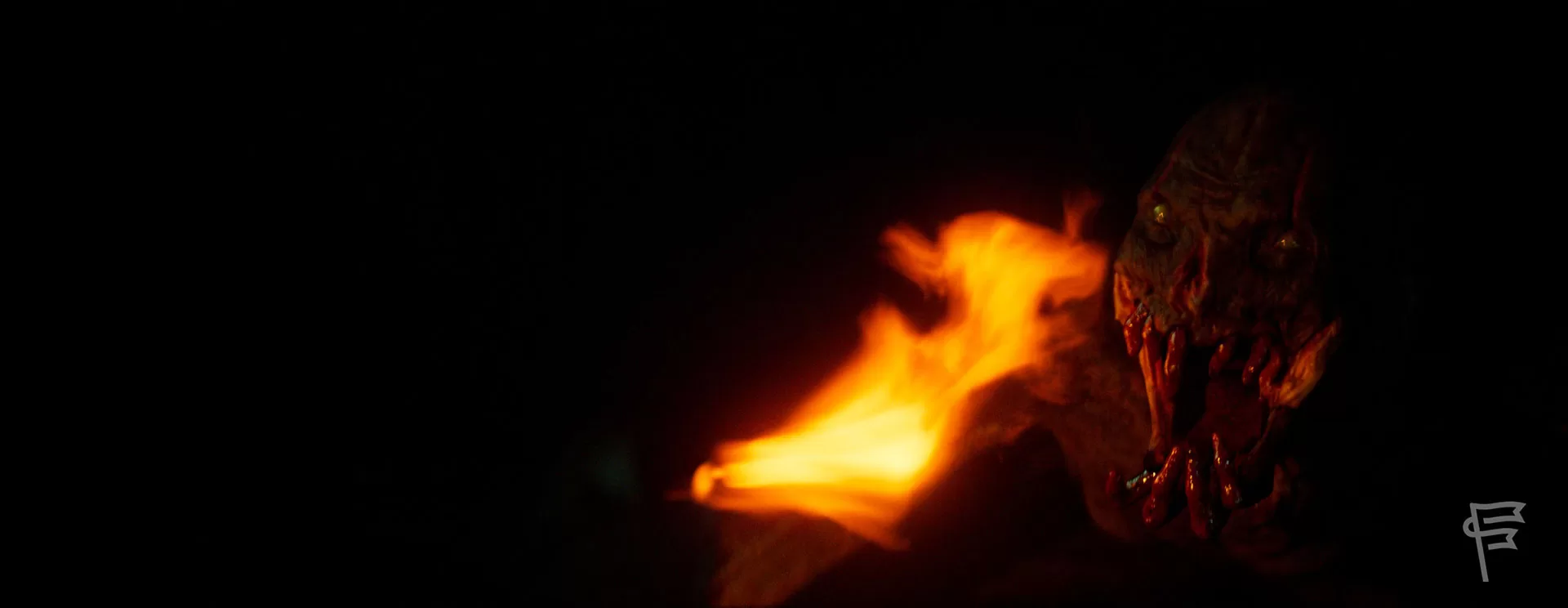
Which shot or sequence was the most challenging?
Determining the most challenging shot or sequence is a tough call, as both the battle shot and the final shot presented their own difficulties. However, if I had to choose, the big fight scene stands out as the most challenging.
In particular, the sequence where Sadie is thrown to the ground by The Boogeyman and the soul string materializes between the two characters proved to be quite demanding. Additionally, capturing the close-up shot of The Boogeyman’s true face, revealing a creature within a creature, added another layer of complexity.
This CFX shot spanned approximately 1000 frames and involved intricate animation work as two characters interacted within two adjacent worlds. Throughout the shot’s creation process, various aspects posed challenges, including animation, composition, and lighting. The main difficulty stemmed from aligning the double reality seamlessly, as the two worlds did not naturally converge. Overcoming these obstacles required meticulous attention to detail and collaboration across multiple stages of production.
Is there something specific that gives you some really short nights?
The project’s most challenging aspect was undoubtedly the concept development phase. However, once our concept was approved by the director, the process became significantly smoother. Having previously worked with Paul and Christina, we already had a solid foundation of understanding and trust. This allowed us to establish a strong synergy with the director quickly. We embarked on an exploratory journey together, constantly striving for improvement. Through our collaborative discussions, we often found common ground and swiftly reached a consensus on what would create the desired spine-chilling climax. That’s how the rest of the process unfolded, with our collective efforts driving us toward success.
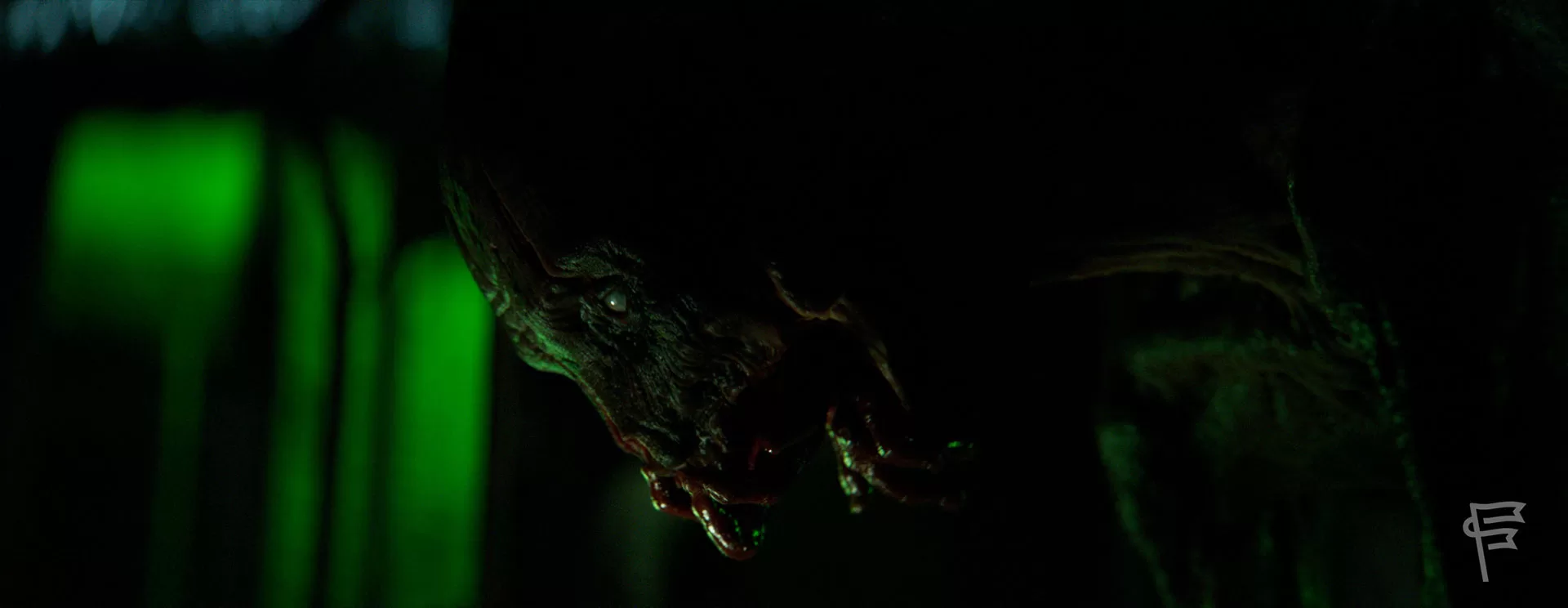
What is your favorite shot or sequence?
Jonathan Piche-Delorme // There are two sequences that I really love. It’s when they fight with the spray can, and I find that really cool. It’s dynamic and fun for us. The animations were quite challenging because there was always an interaction with a jet of fire. Sadie High Line had to combine several shots because sometimes they were looking down or in different places. And you know, the creature is really reactive at that moment, trying to protect itself. I think that was really fun.
I found that really fun. And it turned out well. You know, the creature’s reaction to fire?
Gabriel Beauvais // I agree with everything you said. But it’s true that it was a beautiful sequence. It’s when we see the creature moving more, and there’s a nice transition between seeing it in the shadows and then in the fire when it’s lit up. It allowed us to see more of it. It’s the first moment in the film where we see it up close, with scary close-ups of its face in the fire, fighting. It’s cool, and I found it really fun.
What is your best memory of this show?
Our best memory of the show is definitely working with the incredible team. We had a great dynamic and collaborated seamlessly. It didn’t feel like we had demanding clients; it was a true collaboration. Additionally, the possibility of the film going to theaters and the excitement surrounding it was another standout moment. Overall, it was an amazing experience; we were all in it together, riding the same roller coaster of emotions.
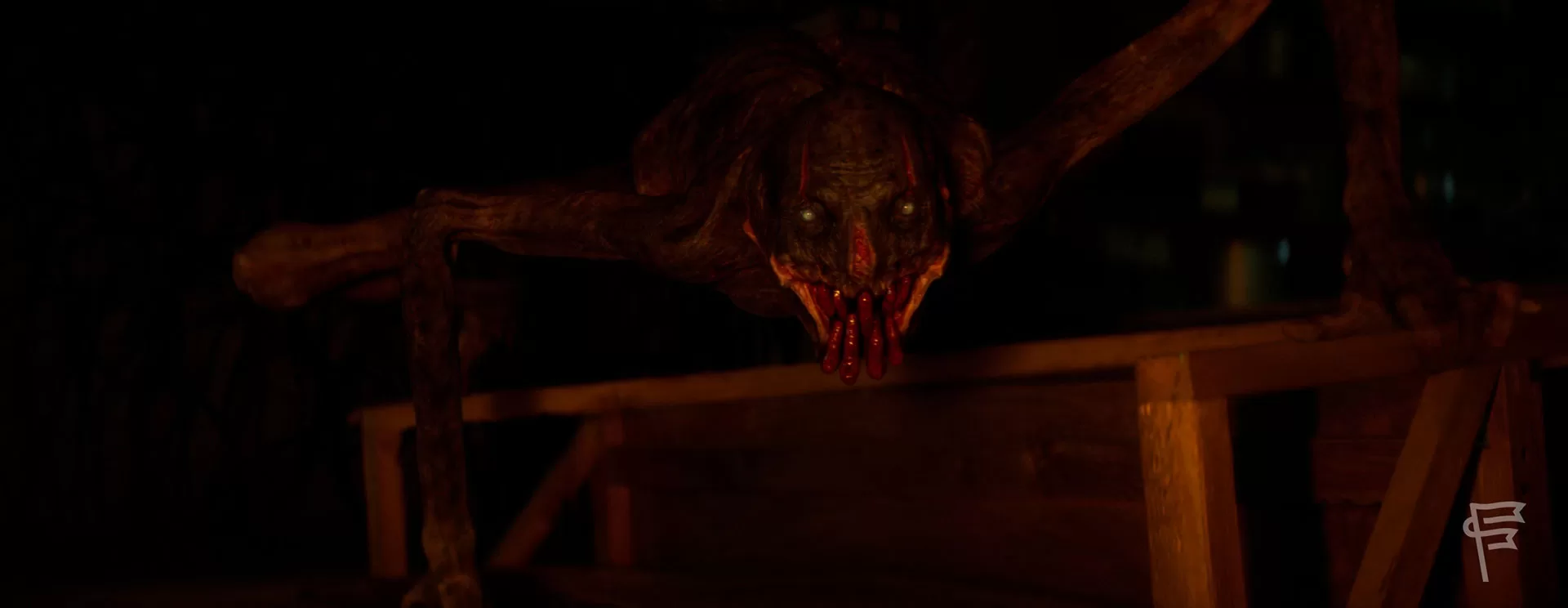
How long have you worked on this show?
In terms of the show’s timeline, we were initially approached by Paul and Christina in November of 2021. We started working on it shortly before Christmas, focusing on developing concepts and sketching out ideas. These were then presented right after the holiday season. Our work on the show concluded in November, meaning we dedicated nearly a year to it, around 11 months. Prior to filming, we spent approximately four months in pre-production, followed by the remaining time in actual production, totaling around 8 or 9 months.
What’re the VFX shots count?
The total count of VFX shots is 180. Out of these, 120 shots are dedicated to the animation of The Boogeyman. Additionally, FOLKS Bogotá contributed to the project by working on 25 shots, which involved tasks such as hair replacement, wig fixes, and continuity fixes.
What is your next project?
We are both working on exciting projects that feature creatures.
Jonathan Piche-Delorme // For my part, I am working on a feature with creatures and a video game environment.
Gabriel Beauvais // In my case, I’ve had, once again, the opportunity to be involved in the conception of the creatures.
Stay tuned for more information and updates on these projects.
A big thanks for your time.
© Vincent Frei – The Art of VFX – 2023





